Blogs
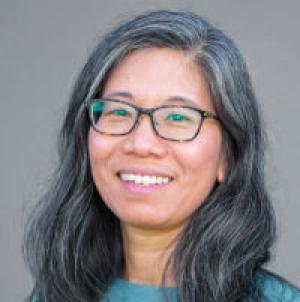
Self-care has become a familiar concept and an area of interest in faculty development and in student life. For many, self-care has become the substance of our reflections about personality traits that stem from our family of origin to concerns about longevity in our professional and vocational lives. The call to care for self does not go unheard, and for many there’s puzzling about hobbies, a reluctance to make the necessary changes to squeeze self-care into our already overloaded schedules, and perhaps even an eschewing of the import of self-care. A lot of people attempt to find an activity to take up for a couple of weeks (think New Year’s resolutions) that will quell the inner voice reminding us to check yet another box on the to-do list because of an intuitive sense that self-care is indeed a healthy practice. Why write a blog about something that doesn’t seem to require much deliberation? After all, isn’t a response to the invitation to care for self a simple yes or no? I have spent the past eight years piecing together a professional response to vocation. While I pursued a terminal degree envisioning a full-time faculty position somewhere, this picture of my ideal professional life has taken a much different turn. For a few years and holding on to my dream, with each cycle of yet another academic year and another application submitted, there was hope that a full-time faculty position, or any full-time job in a seminary, would eventually materialize. In the meantime, I was a busy adjunct instructor and pastoral minister, all the while juggling the demands of family life. With each year and with each declined application, I found myself in a cyclical pattern of saying yes to adjunct work for the following academic year because I was uncertain that I would have other opportunities. Clearly, this was not what I had expected after many years of hard work, nor did I think this was a way to honor the village that showed up so that I could complete the degree and graduate. Don’t get me wrong, there IS immense gratitude for the enriching opportunities to work and I continue to learn best teaching practices, even in areas that aren’t explicitly in my wheelhouse. With little to no job security, teaching and prepping for each new work opportunity is demanding because an invitation to teach again the following year is dependent on performance and whether there is a need. Increasingly and with significant changes in the terrain of theological higher education, graduates with doctoral degrees are required to reexamine their professional aspirations and shift their expectations according to the reality that there may never be a full-time teaching opportunity. From navigating different institutions as an outsider to developing and teaching new courses, individuals in part-time, contractual, and non-tenure track positions amass a full-time workload with hours accrued from various employers. And so, a resolute and affirmative response to the invitation to care for self in this professional adjunct reality is tempered by the constraints that come with financial strain, the emotional toll of job insecurity, the psychological weight of challenges to self-esteem, and the body’s physiological responses to stress, to name a few. None of these adjunct realities negates the import of self-care, and contractual, “part-time” adjuncts are in no way exempt from the need to care for body, mind, and spirit. Burnout is real and an accompanying and worrisome symptom of burnout is apathy. If an outcome of burnout is that instructors no longer have the capacity to care about students and all the good that happens in physical and virtual teaching spaces, then it’s imperative that teachers and institutions alike look closely at institutional culture and professional location to examine the particularities behind resistance to and an inability to say yes to self-care. Whatever the season and context of teaching, administration, church ministry, or any of the myriad ways people are employed, rather than judgement and shaming for the decision to forego self-care because of sheer exhaustion, lack of resources, and the unrelenting pressure to produce in order to matter, the invitation of this blog is to examine professional location and how this supports or obstructs your ability to practice self-care. And if the good work of theological education is meaningful, life-giving, and worth the marathon, perhaps it’s time to dig deep, to unplug, and to access all our grounding sources for a spaciousness that reminds us that we’re more than what we produce and that we’re worthy of care.
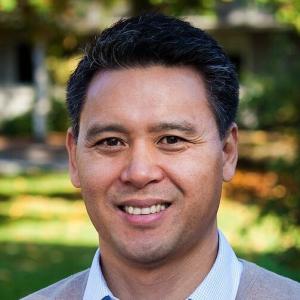
I came across a book during graduate work whose title still haunts me: When Work Disappears by William Julius Wilson (Alfred A. Knopf, 1996). The book is not without controversy as it argues how poverty came to exist in west Chicago because of manufacturing company flight. I am not writing, however, to discuss this argument or its controversy. I am writing about the title, which I cannot shake. It feels all too real; it is all too real for so many of us in theological higher education. This morning, I had a conversation with a good friend of mine, a colleague at another institution with whom I have walked during the last fifteen years in this field. They, unlike many aspiring and newly-minted PhDs, have full-time work. But they, like many PhDs already in the field, face the harrowing prospect of needing to find work elsewhere if they are going to make a living wage. It feels like a sucker punch to the gut when you confront the likelihood of needing to find work in a field that seems to get smaller by the year. You have trained numerous years only to be left facing the reality that full-time work is disappearing, and you wonder if a vocation can be had in a profession and field such as ours. I have more questions and curiosities than I do answers or proposals. Undoubtedly, you are reading this as I am writing it, with wheels turning about different macro-analyses and complexities to explain this upheaval: decreasing involvement in organized religion, generational attitudes towards the cost-value of (theological) higher education, the return on investment of this kind of education in future employment, and so on. This is not a tidy blog post that looks for answers or surefire solutions to very legitimate and far-reaching concerns. The primary intent of raising this topic is that I want to name publicly what many of us feel privately or at least discuss in smaller circles with trusted people. Our collective grieving is happening whether we widely acknowledge it in our respective learning communities, institutions, and guilds or not. Of course, there are theological academic institutions which will survive all of this. The financial wealth of some institutions, coupled with the social investment and concern for keeping these institutions alive, will help them weather the changes in the field. Innovative curriculum and flexible pedagogy might even stave off closure. These are promising trajectories. I wonder, though, how educators collectively, and individually, continue to keep vocation alive when they see their work disappear. Let me put it directly: When you lose (or are on the verge of losing) your faculty position or see colleagues lose theirs, what does this do to your vocation? There are many reasons why we get into the profession of teaching, mostly noble ones. I imagine that, at the heart, we get into teaching and become educators because of vocation. There is something in us that comes alive when we make an impact on the world and people through our teaching and scholarship. What then do we make of our vocation when our professional opportunities close? I do not ask this from afar. I experienced the disheartening reality of a school closure. I have worked on a vocational statement for the last thirteen years. I come back to it every so often as a probing and aspirational exercise. I ask whether this statement continues to describe who I am (probing), while I also look to the statement to guide me in who I am becoming (aspirational). After many revisions and wording changes, the commitment remains the same: my center, call, vocation, and fuel, is to help people live flourishingly. This is more challenging in today’s landscape because work is disappearing. I am adjusting as many of you are too. Checking in with a colleague, serving as a reference for someone doing all they can to secure a position, and having truthful conversations with colleagues as to why you voted to close the degree program they oversee—these are ways to currently express our vocation. There are other small and significant ways you and I keep vocation going. These are not novel ideas, but they take on a deeper quality because of the severe reality that collectively faces us. And if there is a shared vocation in theological higher education today when work disappears, perhaps this is it: that amid our vocation to teach and form is also a vocation to grieve loss in our field and to humanize people who make up and (hope to) carry out the field.
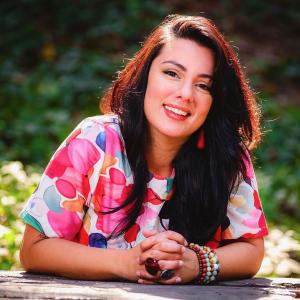
In Por Uma Educação Romantica (Papirus, 2003), Rubem Alves speaks about how he found his way to poetry. He describes how woundedness he experienced in life made him understand that literature, poetry, music, storytelling, and the visual arts were not only nutrients for violated and hungry bodies but also joy for anguished souls. He writes: “Science is fire and pans, indispensable kitchenware. But poetics is chicken and okra, delectable food for those who love this dish.” As an educator, storyteller, and world-maker, he was a compulsive fruidor de vita—he conjured new life into being. We have reached the end of a fourth semester touched by an ongoing pandemic that has brought so much loss and grief. Our families, our communities, and our learning spaces are filled with bodies that are carrying an overlay of stories, experiences, and memories that feel like webs spun out of un-rootedness, pain, and trauma. And I have been asking myself how to begin to undo the trauma that we have all metabolized. How can we redesign our classroom encounters, rituals, spiritual practices, and ways of knowing? How can we experiment with other ways of being, invent other vocabularies and grammars, other corporeal practices for grounding, creativity, and connection? I believe Rubem Alves would invite us to pay attention to the spaces where poetic inventions emerge—spaces of art making that are ripe with the potential to smuggle life, joy, and creativity back into these many landscapes of death. What kind of potent conjuring could happen if we cleaned our brushes, wiped our camera lenses, heated our welding tools, recovered our songs, dusted our instruments, located our yarn, filled our confined spaces with pulsating bodies that are not afraid to reinvent erotic grammars of playfulness and ritual, to heal these wounds? Art, as a way of feeling, knowing, and healing allows us to access what is hidden within our most intimate recesses. What our busy minds want to forget, our embodied artistic practices tend to re-member. From rage to grief to wonder, the arts help us touch, sense, and name our emotions and educate our affections while inspiring us to resist, denounce, agitate, heal, connect, and generate tools for speculative imagination, for integration of embodied, emotional, and intellectual knowledge. When we immerse ourselves in acts of creation, we have access to the visceral, the somatic life of the body: its reflections, limits, intuition, answers, desires, and needs. Through artistic languages, we can begin to weave the invisible back into the perceptible. Art also has the power to evoke, to create other possible worlds. And because of art’s power to provoke, we are able to sit with the trouble, to lean into instability, to practice unlearning, and to affirm our inherent capacity to be at once problematic and prophetic. In a way, and as Alves proposes, the arts remind us of the life that is buried beneath the weight of our responsibilities, our angst, and our pain. Sometimes, Alves affirms, life has to lay dormant for years, buried within our sepulchers… Sometimes life only has a chance after death. So, in the midst of the death that surrounds our days, weeks, and months, and the millions of lives lost to COVID-19, I share with you the work of an artist whose work has activated my classroom, reanimating and mobilizing teacher-learners to create otherwise, even in the face of impossibility. vanessa german describes herself as “a citizen artist who centers the exploration of human technologies that respond to the ongoing catastrophes of structural racism, white supremacy, heteropatriarchy, resource extraction, and misogynoir.” german’s work ranges from sculptures to performances, rituals, processions, installation, photography, and much more. As a way of sentir-pensar of the world, german’s work seeks to “repair and reshape disrupted human systems, spaces, and connections.” Her practice also engenders new models for being and becoming in the world that incorporate healing, creativity, tenderness, and collectivity to address our society’s most pernicious violences. In the work entitled Blue Walk, curated by Wa Na Wari, german staged what she named “” In the context of this pandemic and the interlocking systems of oppression, german’s performance invited participants to acknowledge “the holiness of the Black body on the living planet as a healing channel of release and power.” Performers touched, sensed, shared, and metabolized experiences of rage, grief, tenderness, laughter, and the need to rest. This particular pilgrimage was staged in September, during the Time-based Art Festival organized by the Portland Institute of Contemporary Art. Participants were invited to walk “in the power of the Blues. Moving in the power of Water, Creativity, and Dimensional Wholeness. The Ritual is the Goodbye Song and The Lifting Up Song. We learn this in a short period of togetherness pre-ritual. These songs are about listening, giving permission to the voice and the body, and taking up space and sky.” vanessa german’s potent performance enfleshes art as a way of feeling, knowing, and healing. Through storytelling, mixed media, assemblage of bodies, and textile, german mediates ritual and collective acts of togetherness to reclaim the right of Black people to share in power, spirituality, and presence. Non-Black participants are invited to witness, to be mindfully present, and to confront the ways in which we internalize and externalize anti-Blackness in our relations and lives. Collectively witnessing the work of artists such as german opens up a “capacity to relate deeply and respectfully across differences,” while maintaining a “receptivity to the unknown,” to borrow Laura Pérez’s language (Eros and Ideologies [Duke University Press, 2019] xx). Inherently polyvalent, these works have a tremendous power to connect, reverberate, and reveal what is hidden within our interiority. As sites for world-making and choreographing new possibilities of being, feeling, knowing, and healing, the visual arts can cultivate in us an orientation and openness toward wonder, mystery, and that which we have othered, forgotten, disposed of, or violenced. This pandemic, the ensuing uprisings, and the incapacity of governments to decently respond to the urgencies of our times have impacted us in ways that we cannot fully grasp at the moment. By inviting these works of art into our classrooms, learning communities, and academic spaces, I believe we can conjure new possibilities of life that allows us to sense and comprehend the world differently—even in the face of impossibility, interruption, and derealization. Works like Blue Walk are, indeed, nutrients for violated and hungry bodies as well as joy for suffering souls. *Photos by Tojo Andrianarivo. vanessa german, Blue Walk, curated by Wa Na Wari, September 2021, Portland Institute of Contemporary Art.
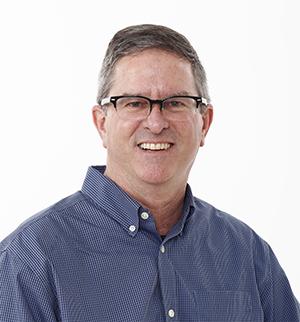
How fitting it is that as I began the final edits on this post, I ended up clenching my jaw, tensing my shoulders, and generally doing just the opposite of what I’m trying to say in this piece. My goal is to bring the benefits of self-care into the classroom. Self-care are two words I don’t use. But, fifteen years ago a Wabash Center mentor said, “You are really good at self-care.” My modes of self-care have morphed over the years, and now the main one is my visual art practice. What I am considering now are ways to facilitate artistic self-care among students. What might it look like to create space in classrooms for students to make art as a way of learning religious studies? How might students not only learn religious studies, but have the learning experience mimic the calm, creative moments of making art? I’m not saying that art is just about feeling good; no, it’s hard work, but a very different type of work than writing papers. I didn’t grow up drawing a lot, but I majored in art, sort of, and then dropped it after a year. The last two summers, I focused intensively on developing my art practice. Rather than thinking, “I really should be doing something else with my time,” I thought about how my linework asked questions; how the calming effects of artistic processes opened space to imagine my art as doing research. Of course, there would be a written element, but the art itself became the primary source for the writing. I was also preparing for my first solo gallery show, which was on hold for more than a year due to COVID-19. My research/artmaking for the show began with the question, “What would it be like to draw as a Buddhist?” Obviously, that question simply leads to innumerable other questions, but that’s part of the point: the merging of drawing and doing research. During my artist talk, I was describing the central piece—a five-by-ten foot vertical triptych—when I spontaneously blurted out, “This is not a hobby. This is who I am at the core of my being.” My next thought was, “Whoa. Where did that come from?” That moment solidified my resolve to facilitate similar experiences in the religious studies classroom. Yes, I’m dreaming a bit here, but it’s a dream I’m actively pursuing. I named the triptych, “Forgetting the Ox,” which is the seventh of ten stages on the path toward enlightenment, according to the Ten Ox-herding Pictures commonly used in Zen. My drawing illustrates—rather loosely—some parallels between my becoming an artist and the struggles of the ox-herder in locating his “true nature.” It didn’t take long for me to imagine an entire course designed around art-making as doing religious studies. I already regularly have students draw their metaphor of being a college student, their religious or moral autobiography as a one-page, six-panel comic, or an image of the Buddha without looking at reference material. These exercises feel like “easy days” from a student’s perspective. Honestly, sometimes these exercises feel like I’m not really teaching. But there is plenty of learning taking place: students relax, laugh, tell stories about their religious upbringing, and gain confidence in sharing more of themselves as they describe their drawing to their classmates. The metaphor drawing, in particular, leads to students taking risks and becoming vulnerable; for many this is their first time drawing anything in years. Class becomes self-care, if only for a short time. So why not build upon those experiences to learn course material, moving well beyond personal metaphors? What if, for instance, in order to learn about Buddhism, students were to create a series of images of the Buddha? In the process, they would make new connections to the course, and likely retain information far longer than normal. Plus, they would add the somatic/artistic element. I’m not ready to forgo writing assignments, but the writing would now incorporate a discussion of their artwork and how it integrated with their research. My own metaphor as a professor is radically different from the one I drew many years ago in a Wabash Center pre-tenure workshop. At the time, my drawing depicted a long winding path filled with obstacles. Today, I would draw a group of students on winding paths, with me off to the side, in awe of their creativity, ready to help them figure out their paths for themselves. The new metaphor is less about me, and more about empowering students as they create their own journey of self-discovery.
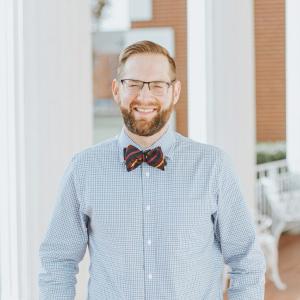
The COVID-19 pandemic has had untold impacts on our shared work of teaching and formation. For those whose institutions have continued in-person instruction, no matter the degree of precaution taken, the risks of transmission have added fear, stress, and uncertainty to teaching contexts that already include significant challenges (which I need not enumerate here). Our challenging circumstances have also provided unique opportunities, though. And many have responded with admirable flexibility and resiliency. I have heard inspiring stories from friends and colleagues who have been able to facilitate safe learning and are sometimes even thriving, within the constraints and possibilities of our specific situations. I always have butterflies when a new school year begins, but in August of 2020 I felt paralyzed. How could I ensure that I was doing everything I could to keep my students safe while also facilitating the possibility of learning and growth within the unique stressors of the moment? I decided that, as long as I could ensure accessibility, all of my classes would meet outside, weather-permitting, as often as possible. In this first blog (of three), I will introduce the practice of outdoor teaching and reflect on its significance for theological education in our current circumstances. Two subsequent blogs will explore significant experiences and takeaways from my own outdoor instruction since August of 2020.[1] As I noted above, my fundamental motivation for outdoor teaching was to ensure a safe learning space. To be sure, walls and a ceiling offer safety and protection from the elements. When indoor spaces become places of more significant risk, though, we can experience what is normally protective as oppressive. The masks and distancing required for safety in enclosed spaces also raised literal barriers to communication and to nurturing the sense of community which I strive to facilitate for my students. Meeting outdoors allowed us all to breathe more freely, and in turn, to communicate and cultivate community more intentionally and with greater effect than would have been possible behind masks, socially distanced, and wary of the threat of a pathogen spread much more easily in enclosed spaces. Outdoor education has a long and storied history. While it has not always been adequately inclusive in western contexts, indigenous peoples have long emphasized the importance of learning within, and from, places of inhabitance. Our current climate crises demand that educators in theology and religious studies intentionally practice and foster connections with our more-than-human natural world for the sake of its well-being and for the sake of our own survival. Such intentionality is a matter of spiritual, religious, and moral concern for me as a Christian theologian. Though I have yet to teach a course directly on issues of creation care, teaching outside has already provided me with countless opportunities to connect my students to the natural world. Aside from providing an occasion to help meet the exigencies of responsible stewardship and living justly in creation, I have found that outdoor teaching is profoundly humane. Our built environments have the potential to make us forgetful of our dependence, contingency, and even capacities for embodied learning. However, as Jennifer Ayres writes, “When learners are invited outside the four-walled classroom, . . . their sensory experience of nature, particularly when paired with caring mentors who can accompany the learners as they make sense of their experience, can be transformative.”[2] When we resumed face-to-face instruction in the fall of 2020, I told my students that I suspected that our shared work together during the 2020-2021 school year would likely make for the most challenging and most poignant year of their educational journey. It was certainly the most difficult and most transformative school year yet for me. Teaching outdoors has provided me countless opportunities to reassess and improve my abilities to empower and instruct my students, to discover and promote cross-curricular and intellectual, moral, and practical connections, to appreciate the privilege of the work that I am able to do, and to marvel at and encourage the courage, attentiveness, resiliency, and creativity of my students. Though the uncertainty of the pandemic continues—I write these words just days after the discovery of the Omicron variant—because of the countless benefits both I and my students have experienced in classrooms without walls, I cannot imagine going back inside again full-time. I will be relieved if and when we are all able to breathe, speak, and listen more freely indoors, but all of my future teaching will include the fresh air of my classroom without walls. [1] I am grateful for the opportunity to share what I have learned in the hopes that others might benefit. That said, I must acknowledge that the privileges of my embodiment (as a cisgender white male) and my institutional circumstances (a campus with infrastructure amenable to outdoor instruction) mean that what I have been able to do may not be possible for others. Even so, the experience of meeting outside has reminded me of things I had forgotten and taught me new things about pedagogy that are worthy of consideration, even for those unable to teach outside. [2] Jennifer R. Ayres, Inhabitance: Ecological Religious Education (Waco, TX: Baylor University Press, 2019), 76.

Talking about race in the classroom makes me nervous. What if a white student says something awful and I don’t know how to handle it? What if I don’t know the facts? What if something blows up and I end up in big trouble? And isn’t it irresponsible of me to teach something I don’t know enough about? Since race is so charged and complex, it’s tempting to leave it to experts. But I’m teaching at a small and predominantly white Catholic college in the Northeast (I’m white myself), and I largely teach gen ed to first-year students. We regularly teach outside our areas of expertise. And since very few of us specialize in race, our students won’t learn anything about it if non-experts avoid the topic. That seems unacceptable, so I’m teaching race even though I’m uneasy. After all, fear isn’t always a good reason to avoid something. I tell my students that all the time. I also believe that my fears are out of touch with reality. Of course, awful outcomes are possible. But they aren’t likely. I’m a good listener, I’m tenured, and my students are decent human beings who try to be kind, considerate, and non-racist. And I don’t have to stay ignorant: I can read, listen, and practice. Since I started engaging the topic of race in my classes, I’ve improved. I know the subject better, I can sometimes anticipate what students will say and how and if to respond, and I’m better at managing the conversation. Most importantly, I’ve figured out how to create a reasonably safe classroom in which to have these conversations: We don’t start with race. Many of my first-year gen ed students have a hard time speaking in front of the class. They need to practice speaking and they need to trust me and each other before we tackle more controversial topics. My syllabus says that I’m still learning and that I expect to learn from my students, and I tell them that repeatedly. They don’t believe me, so I demonstrate it. I mess up and thank them when they correct me. I ask them to explain things I don’t know, and we build on those explanations whenever possible. When they tell me something cool, I write it down. I show them that I’m still engaged in the messy process of learning and that I’m willing to learn from them. We establish guidelines for discussions early on, and we revisit them before we embark on trickier topics, like race. I mention my discomfort and let them confess theirs, and then we talk about why it might be important to talk about difficult subjects anyway. I give them several ways of providing feedback and to ask questions, and I make some of them anonymous. I request feedback, especially if I suspect there’s a problem. If I don’t know how to handle something, I ask them (and others) for ideas. When I screw up, I apologize and try again. I learn and I grow. Through it all, I keep a nervous eye on my students of color. I might be worrying too much about the impact of these conversations on them. It’s uncomfortable for some of them, and of course I want to minimize their suffering. But my fears tell me that they could break. And that seems unlikely. They have almost certainly heard much worse. Still, students of color are badly outnumbered in my classroom, and while some of them are fine talking to a room full of white people about race, others aren’t. I email them beforehand and give them options: Let me know if it gets too uncomfortable. It’s OK if you don’t want to say anything – and it’s OK if you want to talk a lot too. Some say they’re fine, and some don’t answer. But some acknowledge that it will be difficult, and then we come up with ways of making it a little easier. Some of them end up talking a lot, others stay quiet in class but write to me, and others yet stay entirely silent. I make space for those who want to speak and then get out of the way as much as possible. In the spring, one of my quiet black first-years wrote a paper about our classroom discussion of race. She criticized my talking about discomfort, arguing that white people’s fears about discussing race express white fragility and that we need to get over it. She made a good case. So I’m trying to get over it and I’m reflecting on how to incorporate her insights into my course. Both the course and the getting over it are works in progress. Baby steps. *Read the first blog of this series here. **Watch for the third blog in this series in January.
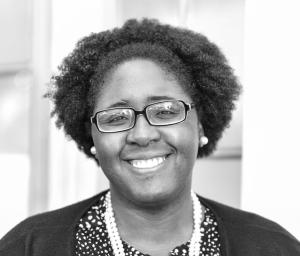
CREATIVITY IS… Learning in the theological academy needs to be liberated. It has been held hostage by standards of appropriateness authored by voices and ideologies long gone yet holding on. They can be quite static and unmoving. The solution? Creativity. But I’m not sure if theological institutions are truly ready for her, for she asks for too much. Within theological education, Creativity needs honesty. She requires both desire and attention to possibility as well as a sense of duty to hold failed systems of current practices accountable. She is bold and voluminous; veracious enough to name when she does not have the appropriate room to thrive. She will, without hesitation, mention how crowded institutional elephants can make a room (no offense to elephants, they are simply not spatially conducive to a healthy theological education environment). Creativity does not hold her tongue, for limit might deter her potential. She announces how holding on to ill-fitting things and anachronistic ideas takes space away from her truest emergence. And theological education is, unfortunately, a space unaware of its spatial misappropriations. Colonial roots can do that to you. Well, what can faculty do to welcome her into their classrooms? “Faculty in theological education,” Creativity would say without pause, “are captives to the institutionality of teaching.” That’s not the answer we were expecting. “I can’t work well, here,” she would continue. “Here, I need the opposite, a spirit of the apophatic. I can tell you where something is by naming where it is not, how it is by how it is not. Here, I need partners who understand the beauty of this refusal—of crafting the necessary in the midst of a mantle of negation. I need dreamers willing to be anti-institutional within their institutions. This clash, of refining through refusing, is where I am.” We can ask her for elaboration: “What does it mean to be anti-institution?” “It means to be me,” she will answer with nonchalance. “But how can an anti-institution institution exist?” we will surely press. “Have you checked the margins?” she will rhetorically inquire. ANTI-INSTITUTIONAL Check the margins. What will you find? Who will you find? Those who have historically been made the least of these. By virtue of their existence, many know Creativity and her bold requirements quite personally. To be creative in the theological academy means to actively resist the lure of traditional institutional priorities: maintaining the status quo financially and otherwise, re-enforcing institutional standards of rigor and knowledge, and continuing in the practice of institutional “speech-acts,” as Sarah Ahmed brilliantly calls them, where institutions claim their worded hopes of inclusion, diversity, and innovation as actual truth, though the world is aware they are not.[1] Creativity is naming where God is by illumining where God is not; remember, an apophatic spirit. To be sure, Creativity can exist within institutions; she has for years, but has she existed well? Freely? Is she permanent dweller or occasional guest? Is it possible, let alone desired, to make her host instead of hosted? To give her full reign of an institution? No. She is too risky. Total creative power would mean granting room for the ways of being and knowing that have always been in the room but have only known suppression. It would mean granting those who have been forced to make the margins their homes shared space in the center. And no one with institutional influence and say is interested in giving up the center. Creativity considers the historical pawns the priority instead of laborers towards the bottom line. The bottom line of budgets are amenable foes but not the only ones. The bottom line of certain standards of academic rigor, the bottom line of grades as the only means of intellectual analysis, the bottom line of fortifying academic structures created for the white men for whom theological education was created. Creativity wants—no, needs—not only the space of the classroom to leave a deep impression, but say over the entire structure of the theological educational system. Unprepared to acquiesce to such a demand, institutional heads will ask if it’s OK if she appears in the individual efforts of underpaid doctoral students, job-insecure adjunct educators, and exhausted minoritized faculty persons. She will reluctantly agree, or more like make do, but never stop asking in a nonchalant, rhetorical, inquiring tone, “Have you checked the margins?” There is a message in the margins: the classroom could be a space of influence—influence not synonymized as power, but a space where relationships between students and teachers, different forms of knowledge, and measures of intelligence can be reimagined. It can be a space where students’ experiences are taken seriously and where teachers do not have to take themselves so seriously. “Have you checked the margins?” How can the classroom become a platform for the periphery? What must be undone so that there is room for better? Many theological institutions still believe they must keep academic tradition for a church traditionally understood; Creativity instead asks, “What happens if minoritized students were the center in the classroom and institution as a whole? Do institutions want to learn their students? Do they trust marginalized experiences to be a true expression of the church universal?” “Have you checked the margins?” then is another way of asking, “Have you asked yourself?” [1] Sara Ahmed, “The Nonperformativity of Antiracism,” Meridians 7, no. 1 (2006): 104-126, especially 104.
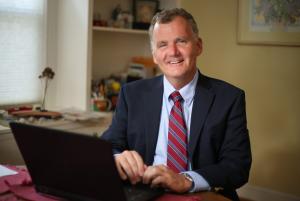
A college friend of mine took his life by suicide when he was only twenty-two years old. The death occurred just weeks before I began seminary in 1987. Theological study offered me a refuge in which to grieve Bill’s death and to try to make sense of it. I wrote papers and talked with friends. I had dreams that allowed my psyche to release the burden of guilt and responsibility. Questions asked with intensity have lingered for years. Why could I not have stopped him from making this choice? Why did he do it? Recently, as I completed a book on embodied spiritual care, I realized that theological questions which try to make sense of suffering have over time opened a deeper awareness of the need to listen to and tend to our own bodies. Such engaged listening practice allows us “to keep on keeping on” when we cannot make sense. It also attunes us to our own pain and the pain of others. I teach listening skills in online and face-to-face classes. When I have modeled listening in the physical classroom, course participants always mention how little I speak. Given the chance, some of them would want to fill in what feels like a vacuum. Pastoral caring and spiritual listening requires attentive presence that leaves space for people to express themselves, to hear their own voices, and to sense God in the story. We also need to learn how to listen to our own bodies. During those role-plays, I pay keen attention to my body by noticing feelings and thoughts, whether and where anxiety is being experienced, and images that come to mind. The debriefing of a role-play in the classroom becomes an occasion for teaching how to pay attention to and make use of one’s own internal process. I draw on my body story and experience to teach others how to pay attention to their own. Over the years, I have used different strategies for teaching embodied spiritual practices. In a course on the spirituality of pastoral care and counseling, I once invited participants to engage in slow meditative walking within the courtyard at my school. Zen Buddhists call this practice of listening with the body kinhin, which means sutra walk. The students willingly gave it a try, but I quickly realized my own self-consciousness around exposing the class to the watchful eyes of staff and onlookers. I have since learned the value of teaching from a place of vulnerability and giving students the choice of how they want to participate. Experience in pastoral ministry informs my sense that listening to our bodies matters for the ability to care with others. Cultivating practices such as yoga, qigong, focused breathing, body scanning, and labyrinth walking, among many other possibilities, helps to access and release frustration, stress, sadness, and anger held in the body. The practices also help us to tap into delight, hope, and joy. Tending our own body story opens listening possibilities for receiving the whole of another person’s or a community’s story and experience. Pastoral ministry calls for such listening. Seminary classes and instructors have a role in curating experiential learning to undergird it. Online asynchronous classes offer valuable opportunities for embodied listening. In the privacy of a secure learning space without anyone watching, students may engage practices that help them tune in to their own body story and experience. On a cautionary note, I urge participants not to engage or to halt a practice if a traumatic response is hooked. This component of the class is completion graded. Full credit is given for briefly describing how or why a practice may or may not be beneficial. My observation is that experiential learning carries transformative power as students give themselves to the process. While I have fully expected some students to go through the motions on the exercises, I have been quite moved at the personal and theological insights most participants share. Some note working through reluctance or resistance to a practice only to find themselves surprised by what opens for them. Some dislike or do not connect to a particular practice and share their honest reactions. Others rediscover a practice that once sustained them. These are profound and not perfunctory reflections. I revel in reading them. Pastoral ministry calls leaders to embodied listening that is genuine and real in their encounters with others and the Holy. This teaching method facilitates listening to ourselves, to our bodies, as a base for that vital practice.
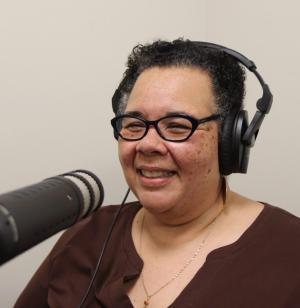
My dissertation advisor and I were discussing my recently written chapter. She believed the chapter needed more work, needed a rewrite. I was passively resisting her advice believing my words were …. good. In a stern tone, my advisor said to me, “You must learn to kill your babies.” Her tone of voice and message caught me off-guard and shook me. The gruesome phrase threw me into the grasp of “student-fear” – that crushing fear that grips learners when they think their teachers are disapproving and likely to abandon them. Until this moment I had known her to be enthusiastic about my work, supportive of my writing. I knew she believed in me and the book I was composing. In that moment I did not have a response to her command/suggestion/demand. In my silence, my advisor explained that everything that I write cannot be deemed by me as being precious. I listened over the landline phone trying not to disclose my disagreement. She chided me that everything I write need not be prized nor saved. I folded my arms across my chest trying not to drop the phone. I distanced myself from her words as she spoke them. She cautioned me that clinging to every word as I write restricts me, encumbers me, and does not allow me to fully engage that which I am writing. In a muffled voice, I disingenuously thanked her for her feedback. This advice was given me in 1998. I am still thinking about the meaning and still trying to live into the intent and wisdom. It has taken several years to say I agree with her, and even more years to practice this necessary skill of creativity and homicide. The creative process, whether writing or teaching, is only narrowed by the unwillingness to get it wrong. It has taken time for me to learn not to archive that which I delete from a manuscript. The best lesson was when I lost many, many pages of copy (irretrievable copy - computer error!) only to realize that the rewrite was stronger, clearer, and more articulate. When I was foisted into this situation, I began to learn the full lesson of “kill your babies.” My advisor was right. On November 26, 2021, Stephen Sondheim died at the age of 91. Sondheim is rightfully considered one of the titans of Broadway whose music and lyrics elevated the American musical landscape. Sondheim was an artistic genius. He was a prolific observer of people. He used his observations as a pristine storyteller to make the ordinary exciting. His body of work is a creative triumph. I was watching Sunday morning tv when the news of Sondheim’s death was reported. The newscaster, seemingly a genuine admirer of Sondheim’s craft and legacy, recounted a quote. Apparently, Sondheim was famous for telling students and budding musicians, “You must learn to kill your darlings.” Of course, in this moment, my dissertation advisor reappeared to me. Sondheim, like my dissertation advisor, believed that until you doubt yourself and the world, you cannot bring forth real change, genuine artistry, and ingenuity. Until you are able and willing to discard the feeble attempt can the creative process assist you to write, sing, or teach the masterpiece. Too often the first attempts to emerge in the creative moment is the expected, the known, the tried and true. These are the darling babies for which there can be no time or attention. These babies must be killed. Getting rid of the darlings creates space for the un-expected, the new adventure, the genuine self-expression and needed voice. Too often the first attempts are reliant upon the contrived response, the constructed environments, the established rules, and accepted conventions. Creative triumph is not born out of complacence and mediocrity. As teachers of religion and theology, our imaginations have a responsibility to bring forth new expressions meant to engage the questions of the world with new answers. Let us not stand in our own ways by curtailing, restricting, or confining the creative process. What course(s) in your portfolio needs to be discarded and re-envisioned? What lectures in your introductory course need to be done-away with and reconceived? In what ways will we assist our students in learning the skill of killing their darlings?

Recently, I was sharing with my children that one of the first purchases I made when moving to a new city or state was a map. In the not-so-distant past (circa 1995), obtaining a map was of utmost importance for daily travel to visit restaurants, stores, and especially the homes of new friends and colleagues. This need for a map diminished when directions became accessible online, but I still relied upon step-by-step printouts from MapQuest in the days before smartphones. For the entire duration of my children’s lifetimes, which is roughly a decade, the notion of traveling with maps or printouts has been obsolete. Directions to and from anywhere are available at our fingertips. When we are driving to an unfamiliar location, my children are accustomed to instructions emanating from an automated voice on a mobile phone, not the crinkling sounds of a human peering at a paper map. When my children begin driving in a few years, I do not anticipate teaching them to read maps in the same way my parents taught me a generation ago. Rather, I will likely provide reminders about devices being sufficiently charged and issue warnings about the perils of multitasking on the road. Technological developments over the past twenty years have transformed our access to information in a myriad of areas, ranging from shopping for household items to researching academic subjects. This information explosion has altered nearly every facet of our lives, but I wonder if theological education is one arena, at least in some classrooms, where the teaching and learning operates as if we were still in the twentieth century. Although much of my journey as a masters-level seminary student coincided with the advent of the information explosion, my experience entailed a lot of rote memorization with a heavy emphasis on comprehension of content, such as the ability to regurgitate information, often in dreaded blue books, about significant persons, dates, ideas, and movements, without notes. I was also required to analyze this content, but only after I demonstrated an adequate grasp of the foundational data. For example, it was important that I knew from memory the chronological order and specific dates of Martin Luther’s theological writings before I offered commentary on the import, impact, and differences between Luther’s three treatises in 1520. My teaching as an historian of Christianity in the United States has eschewed any requirement of rote memorization. I believe it remains valuable to possess a clear trajectory of religious developments and some historical facts from memory, but I also recognize how the information explosion has made it possible to shift my pedagogical priorities toward method, praxis, and application. Access to historical facts is no longer confined to visiting physical libraries or purchasing books because this information is readily available online. But because history is a contested endeavor pursued from multiple perspectives and sometimes with malicious agendas, my aims are to meticulously cover historiography and trace with my students how history gets made. This includes comparisons of written histories utilizing different sources, such as the different presentations of world missions from the viewpoints of white missionaries from the United States and local Christian leaders across Africa, Asia, and Latin America. I don’t want my teaching to be “two-thousand and late,” which is a colloquialism derived from a song by the Black Eyes Peas criticizing modes of thinking or doing that are hopelessly outdated. I cannot teach with some of the same approaches as my predecessors and former professors. I am grateful for the ways they sparked my curiosity and stirred my mind, but my students and I are learning today amid an explosion of information, misinformation, and disinformation. A pedagogy centered on lecturing about historical content for three hours every week and then mandating that my students reproduce this content from memory feels as archaic as printing out directions from MapQuest. It is more exciting and effective to interpret, analyze, and apply the historical content together with my students. In studying the history and legacy of U.S. participation in world missions, we are grappling with the pernicious results of colonization and evangelization alongside the courageous and anti-imperial witness of some individual missionaries. After my students graduate, they may not remember when or where exactly these missionaries served overseas, but they can immediately recall this information on their phones and computers. What I want them to remember, as they plan short-term mission trips in their congregations, is our deep engagement with the moral questions and immoral failings of world missions, including Jomo Kenyatta’s observation: “When the missionaries came to Africa, they had the Bible and we had the land. They said, ‘Let us pray.’ We closed our eyes. When we opened them, we had the Bible and they had the land.” Because I don’t want my students to repeat the mistakes of the past in their ministries, I must continuously adapt and revise my teaching to create more opportunities to connect historical content with contextual praxis.
Categories
Write for us
We invite friends and colleagues of the Wabash Center from across North America to contribute periodic blog posts for one of our several blog series.
Contact:
Donald Quist
quistd@wabash.edu
Educational Design Manager, Wabash Center
Most Popular

Are You Okay?
Posted by Nancy Lynne Westfield, Ph.D. on October 1, 2025

On Plagiarism and Feeling Betrayed
Posted by Katherine Turpin on October 27, 2025

Executive Leadership Involves New Questions
Posted by Nancy Lynne Westfield, Ph.D. on December 1, 2025

Embracing the Imposter Within
Posted by Fred Glennon on September 15, 2025
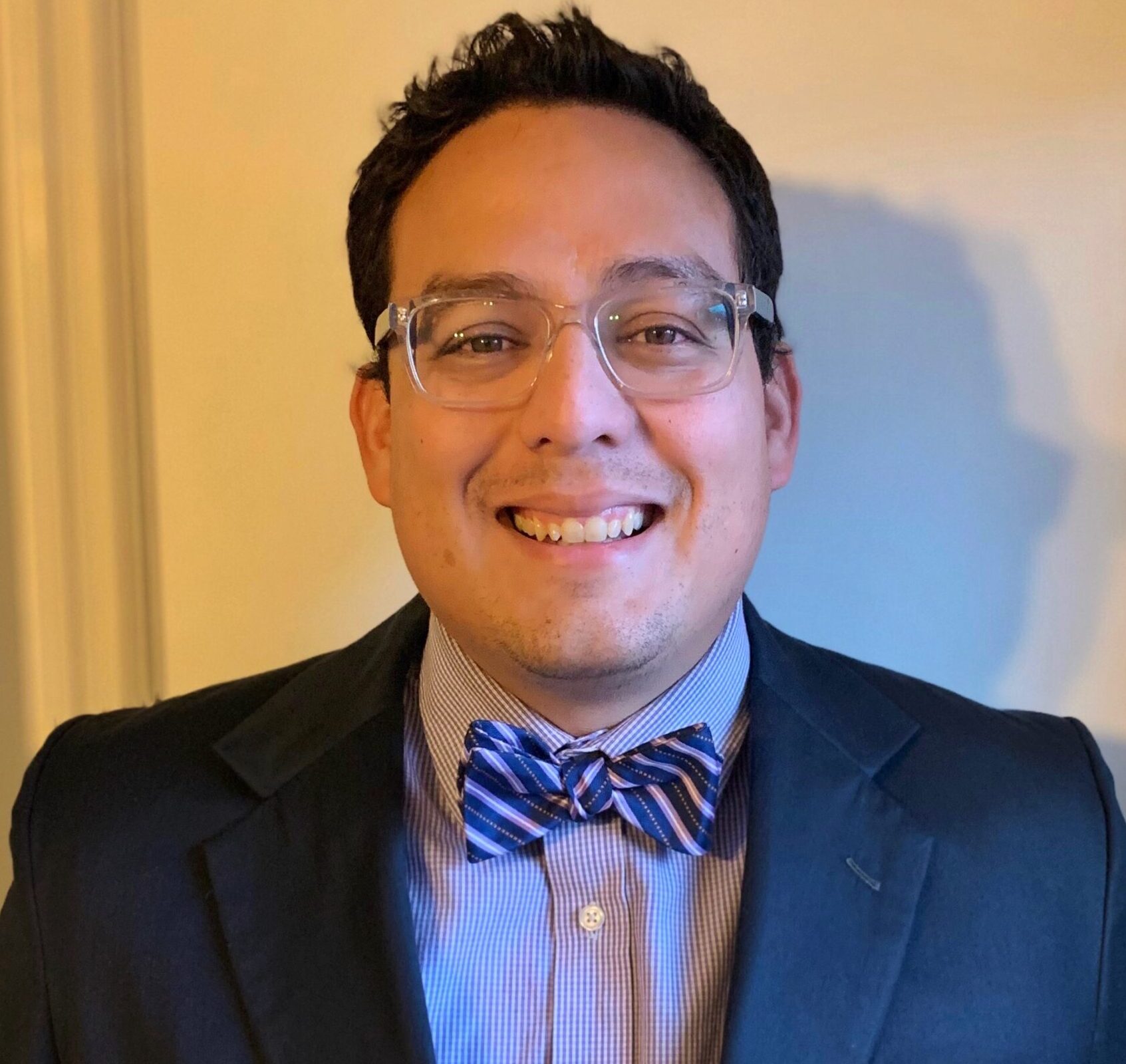
Xenophobia
Posted by Daniel Orlando Álvarez on October 15, 2025